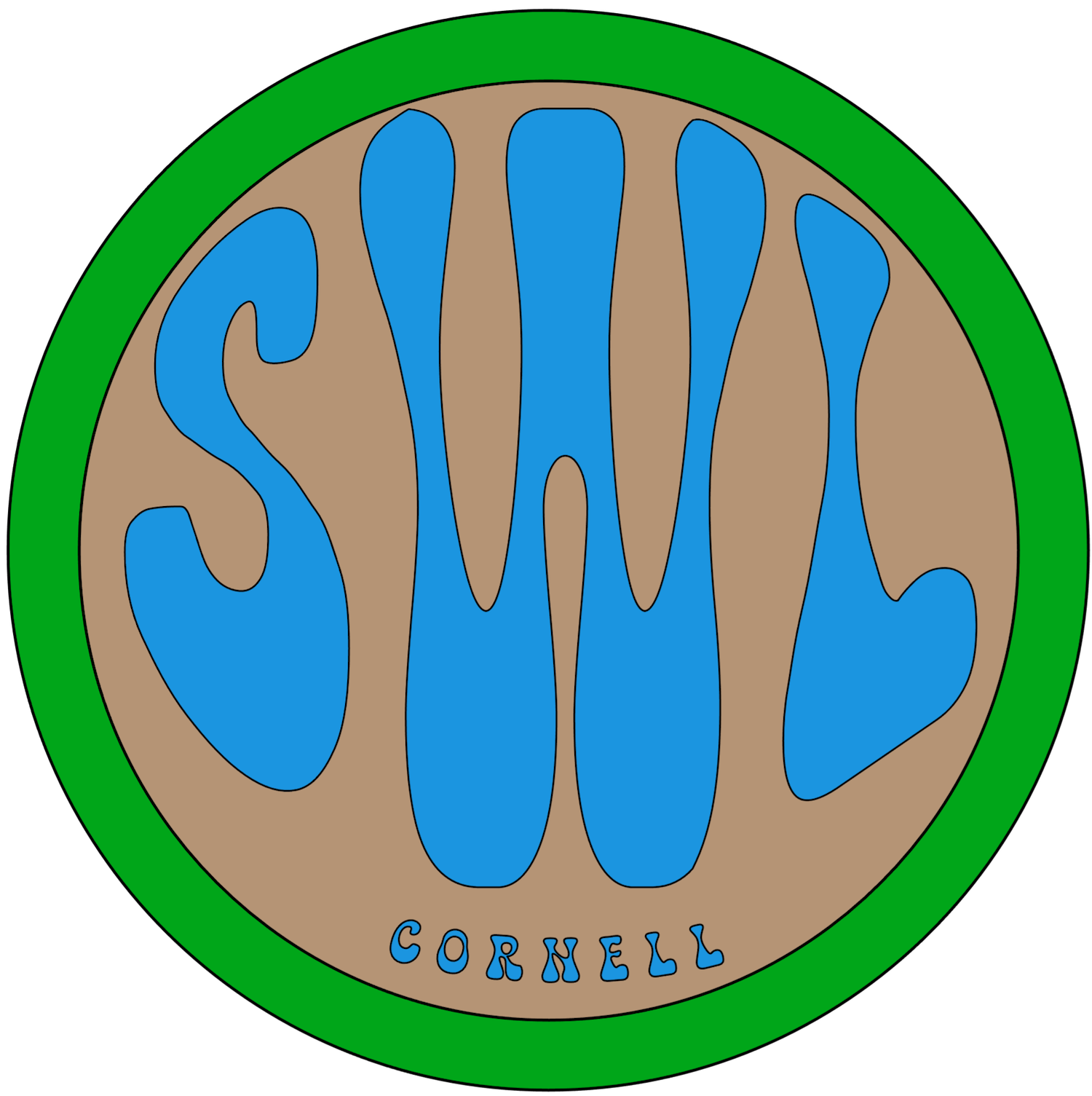BEE 4270/5270: Water Measurement and Analysis Methods
Managing soil and water resources requires monitoring. In this field-based lab course, you learn techniques to quantify water flow in surface and subsurface environments and monitor water quality in lakes, rivers and groundwater. Soil health considerations, measurement accuracy, and water sampling quality assurance are discussed. The final project involves designing a water quality monitoring plan for a research or industrial site.
When Offered: Fall.
Satisfies Requirement: Satisfies EnvE laboratory experience requirement.
Outcomes
- Students will display an ability to communicate effectively with a range of audiences (ABET 3).
- Students will improve their ability to develop and conduct appropriate experimentation, analyze and interpret data, and use engineering judgement to draw conclusions (ABET 6).
__________
2023 Class – Sampling Plan at Homer Thompson Farm
Each year, students in the BEE 4270 “Water Measurement and Analysis Methods” class conduct a project about monitoring a potential local environmental concern. The BEE 4270 class has investigated the warming up of Cayuga Lake because of climate change, and improved the sampling design of a former legal disposal site of low-level radioactive waste. In the fall of 2023, we decided to design a groundwater monitoring plan to design agricultural management practices that would decrease environmental contamination from agricultural chemicals.
Agriculture provides the crops that an ever-growing population needs to feed and clothe themselves. Agriculture done right enhances the ecological services of the land and water. However, agriculture can also be the source of numerous disservices (Power, 2010). One of these disservices is contamination of ground and surface waters with agrichemicals. Understanding practices that lead to contamination requires monitoring the chemical movement and whether they are in groundwater. As more groundwater studies become available, better management practices can be developed, and win–win scenarios can be created for agricultural activities.
The Homer Thompson farm, with an active crop research program, was ideal for studying best management practices for Agricultural chemicals. Most of the farm is underlain by an aquifer at shallow depth. The farm is in Freeville, 10 miles from Cornell. The farm manager, Rick Randolph, welcomes the visits of Cornell classes to the farm, which is another huge benefit.
Below, we present some of the class activities (with pictures) on the farm in preparation for the final project, designing the groundwater sampling program.


During the first lab, we went out to the farm, learned about proper sampling the groundwater, and took groundwater and surface water samples.
__________
To understand how the water quality of the farm affected Cayuga Lake, we went on a boat tour of “Discover Cayuga Lake.” We took water samples. And then later compared the nutrients in the samples taken from the groundwater, Fall Creek and Cayuga Lake. We discovered that the muscles in Cayuga Lake affected the composition of the water samples, but it was not environmentally harmful.

__________
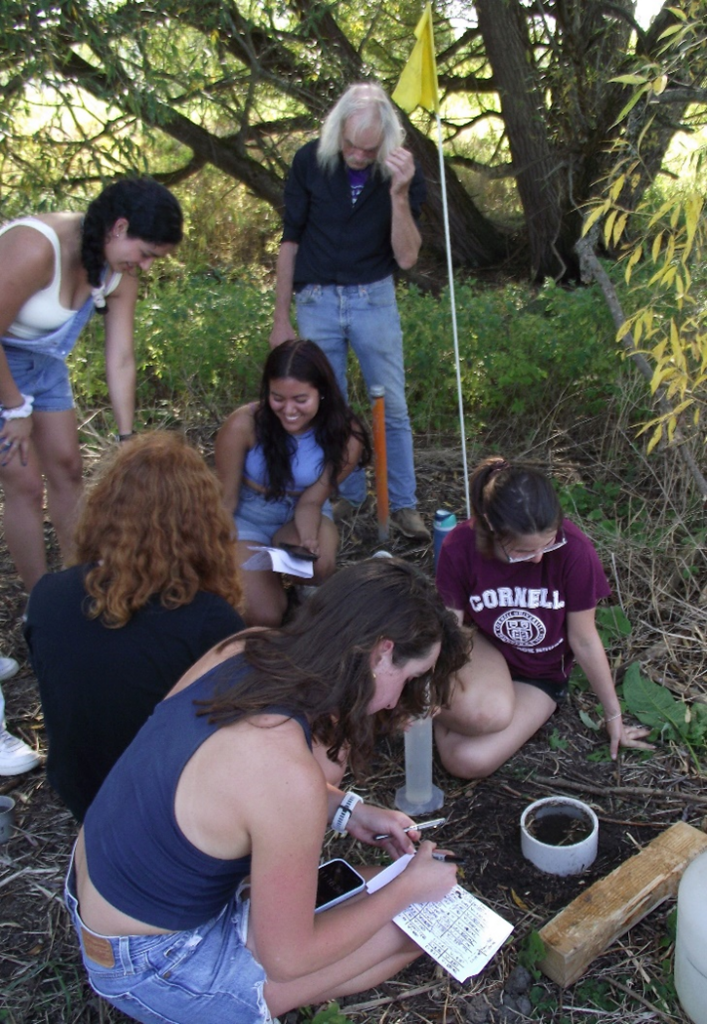

Later, we measured the infiltration rate in the soil. We found that the rate was approximately 3 m/day. This rate was much greater than the rainfall intensity, so surface runoff is not of concern on the farm. Any contamination of Fall Creek that flows through the farm, would come from the groundwater. We found that all the constituents in the groundwater were below the drinking water standards.
__________
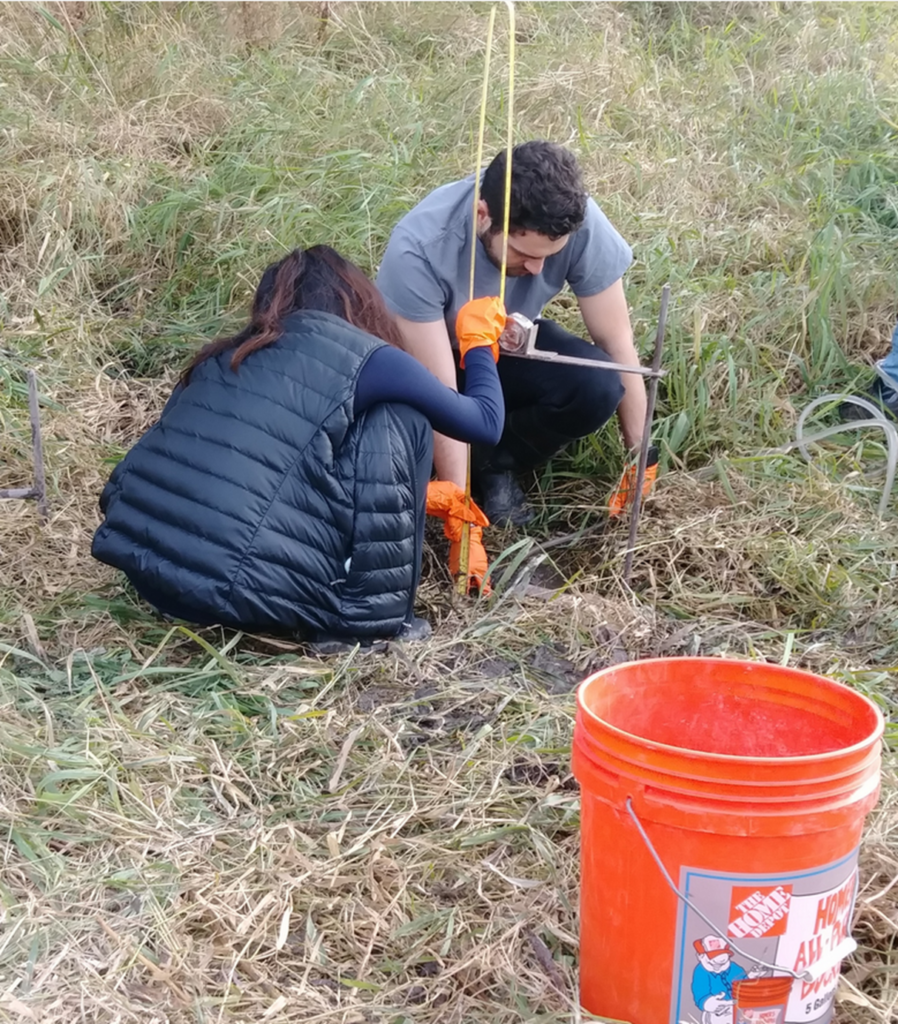
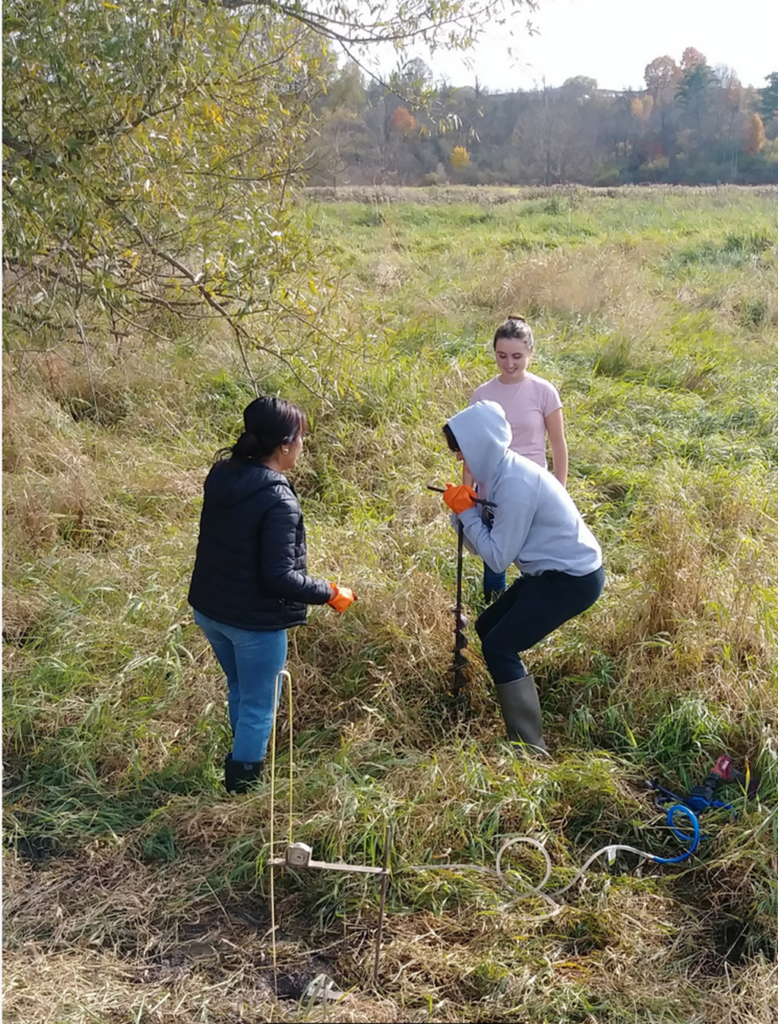
Measuring the hydraulic conductivity of the soil with the auger hole method. Before you can do that, the students had to auger the hole. A lot of muscle power is needed to make the hole. Once the hole is drilled, the rise in the water in the hole is measured, that is easy.
__________


Rick Randolph and Ryan Maher also showed us the farm riding around on a tractor with a wagon.
__________


It was cold on the day that we installed a well. Everybody helped to get the well pipe in the augured hole.
__________
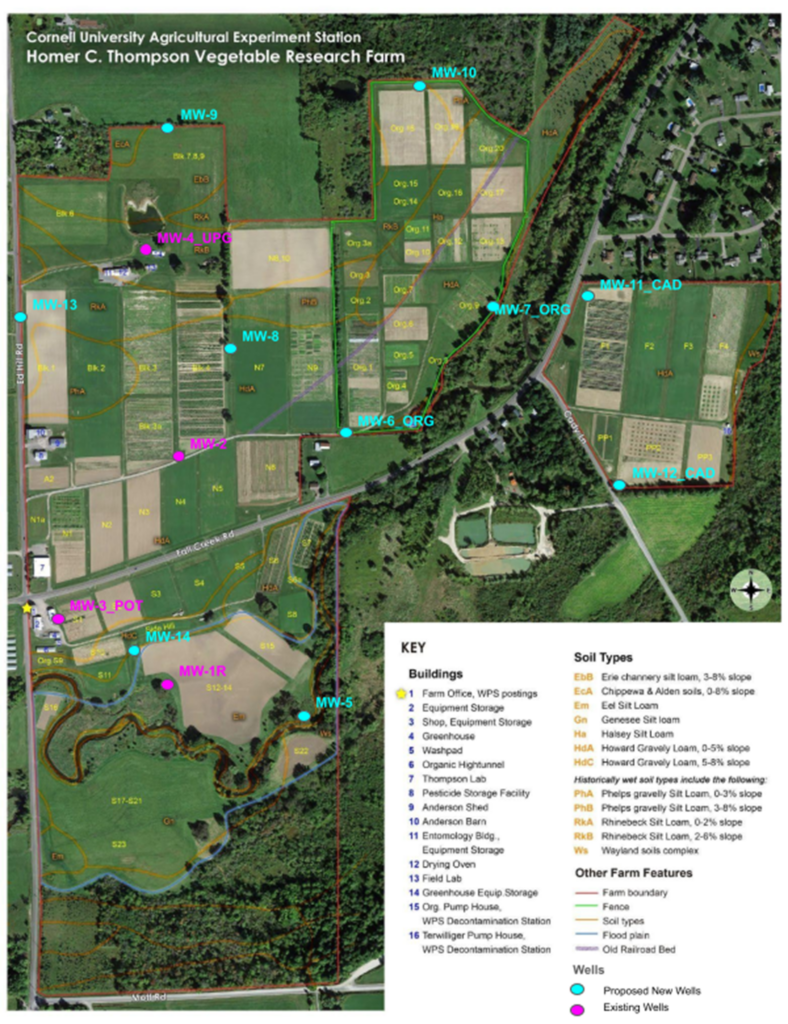
Sampling plan of one of the groups: The wells with the purple names have been installed already. The light blue wells are proposed. According to the student team: “By strategically situating these wells, the monitoring network aims to provide a comprehensive understanding of groundwater composition, delineating contributions from the HT farm, potential influences from the dairy farm, and the impact of external factors such as road salt. This nuanced approach ensures a robust and detailed assessment of the concentration of the agricultural applied levels in the groundwater, facilitating informed decision-making and environmental management for the Homer Thompson farm.
Citations:
Power Alison G. 2010 Ecosystem services and agriculture: tradeoffs and synergies Phil. Trans. R. Soc. B3652959–2971 http://doi.org/10.1098/rstb.2010.0143

